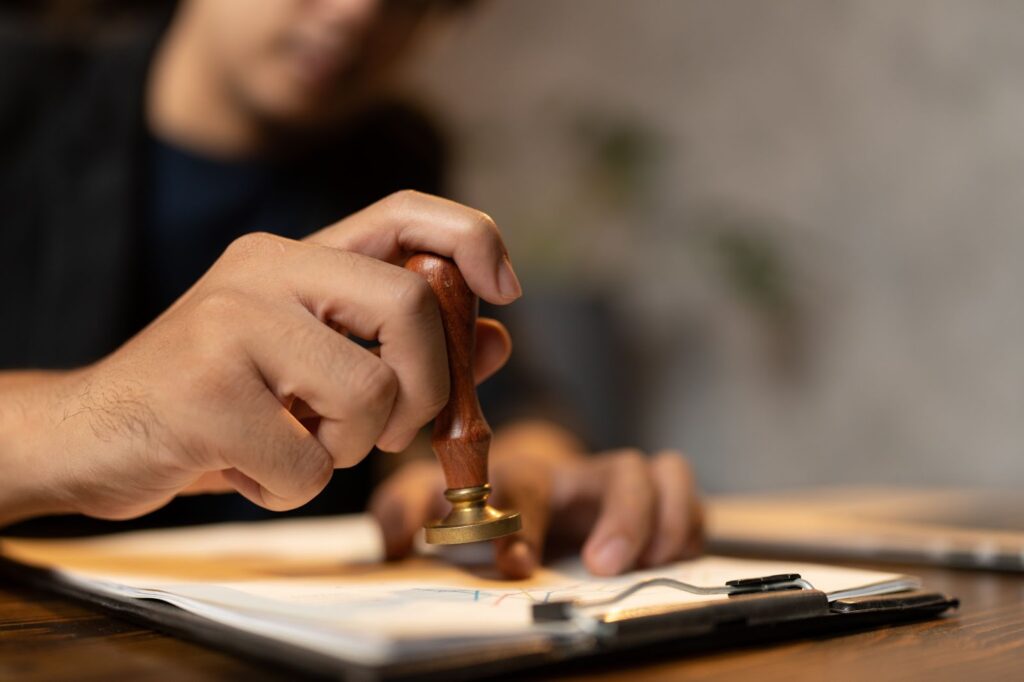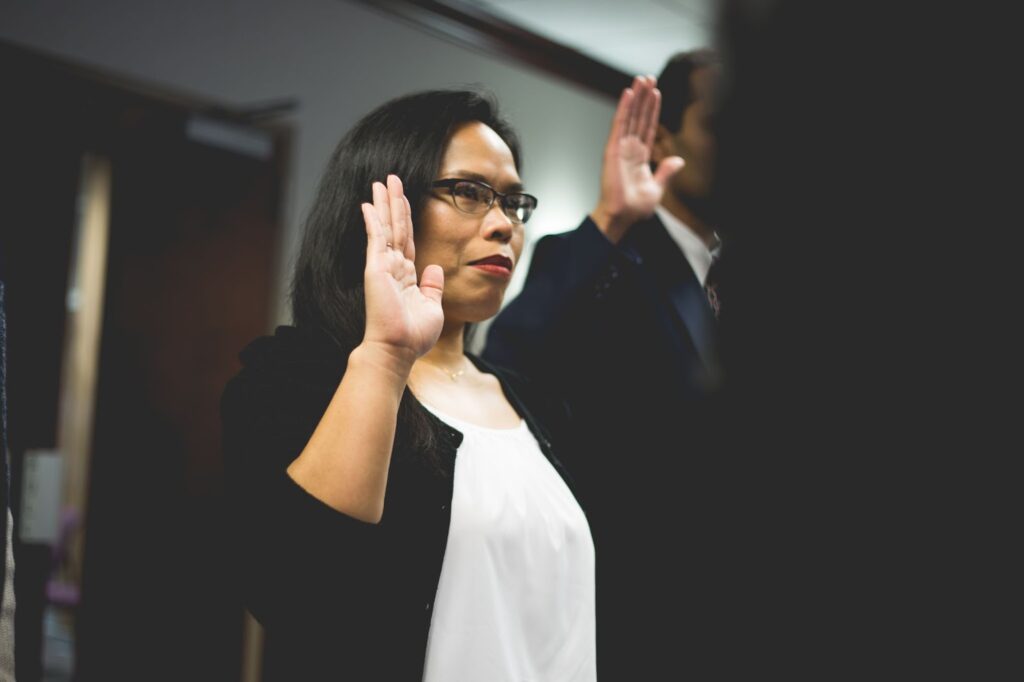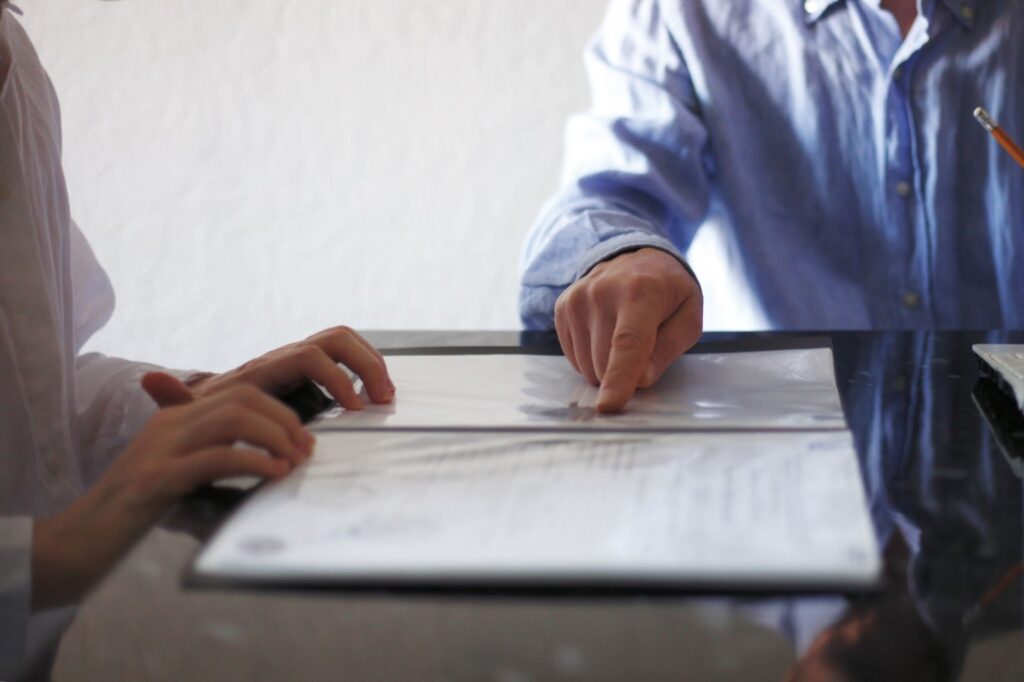
A jurat is when you swear to the truthfulness of a document's contents in front of a notary, who verifies everything is legally binding. You'll need to be physically present, sign the document, and take an oath, confirming under penalty of perjury that the document is truthful.
Unlike an acknowledgment, where the focus is on your identity and willingness to sign, a jurat centers on the content's accuracy. This process is crucial for maintaining the integrity and legal standing of documents. You'll find more details just ahead that further simplify these complex legal procedures.
A jurat entails a notarial act wherein you, in your capacity as the signer, affirm the truthfulness of the document's contents under oath. This commitment to accuracy differs from an acknowledgment, which primarily confirms your identity and voluntary signing. In a jurat, the focus shifts to verifying the information within the document itself, placing the responsibility squarely on your shoulders.
As you approach this process, understand that the jurat isn't merely a formality but a critical element of document verification. The notary serves as an official witness to your oath, underscoring the seriousness of the declaration. You're not just signing - you're swearing to the document's validity, which could have legal implications.
This act enhances the integrity of the document, fostering honesty in your legal and professional dealings. In jurisdictions like Florida, the consequences of perjury underline the jurat's significance. Therefore, when you participate in a jurat, you're actively contributing to the lawful execution of documents.
Remember, the notary will require you to be physically present for the oath-taking. This ensures that the affirmation of truthfulness is unequivocally linked to you, reinforcing the document's legitimacy. You'll verbally confirm that the contents are correct, after which the notary will complete the process by affixing their seal and signature.
Embracing this process, you ensure that every statement you certify under a jurat is accurate and truthful, directly controlling the reliability and legal standing of the document. This not only protects your interests but also upholds the broader values of truth and justice in documentation.
While traditional notarization requires your physical presence, our Online Notary App allows you to complete jurats from anywhere, enhancing convenience without compromising the legal integrity required.
Similar Read: What is an Affiant?

To complete a jurat, you must appear in person before a notary with your document. This step affirms your identity and the document's authenticity. Once verified, the notary administers an oath or affirmation requiring you to swear or affirm the truthfulness of the document's contents. This is vital to avoid legal consequences like perjury.
Next, sign the document in the notary's presence, affirming the truth of your statements. Your signature confirms your agreement to the document's contents and the oath.
Finally, the notary completes the notary certificate and attaches their seal. This action formally validates your acknowledgment and makes the document legally binding, enhancing its security and integrity.
Traditionally, completing a jurat involves several in-person steps, but with our Online Notary App, you can verify your identity, sign documents, and take oaths remotely, streamlining the entire process.
Similar Read: Notarized Affidavit - Everything You Need To Know
When selecting between a jurat and an acknowledgment for notarization, comprehending their specific purposes is essential. A jurat is necessary when a document requires the signer to affirm the truthfulness of its contents. This process entails the signer taking an oath or affirming in your presence that the information is accurate to their knowledge.
For a jurat, the signer must physically sign the document in front of you. Witnessing the signing is vital to validating the jurat because its validity relies on the signer's personal confirmation of the document's contents.
On the other hand, an acknowledgment is utilized to confirm the signer's identity and verify that they signed the document willingly. In an acknowledgment, the signer does not need to sign in your presence but must appear before you to confirm their signature, which may have been executed earlier.
Our app not only guides you through determining whether a jurat or an acknowledgment is needed but also ensures the correct protocol is followed remotely.
As a notary, follow strict guidelines in determining the appropriate type of notarization. The decision between a jurat and an acknowledgment should be made by the client based on the document's requirements, focusing on whether the document's integrity is based on the truthfulness of its content or on the identity and consent of the signer.

Let's now explore some practical tips for notaries conducting jurats to guarantee each step is performed accurately and effectively.
First, confirm the signer's appearance is in person; this is essential. You must visually confirm their identity and witness them signing the document. This direct interaction bolsters the legitimacy of the jurat and adheres strictly to your notary responsibilities.
When administering a verbal oath, maintain a solemn and professional demeanor. Clearly articulate the oath, ensuring the signer understands the commitment they're making to truthfulness. This step is pivotal, as it directly relates to the penalties for perjury. Remind the signer that their declaration is under the penalties of perjury, emphasizing the severity of dishonesty.
Our app supports notaries by providing a structured, secure platform to manage jurat processes, complete with built-in checks that ensure all legal standards are met.
Next, focus on document accuracy. Scrutinize the document alongside the signer to confirm all details are correct before they sign. This not only minimizes future legal complications but also reinforces the integrity of the jurat process.
Record all necessary details meticulously. Documenting the process thoroughly is your safeguard and also serves as a legal requirement. Include the date, the type of identification provided by the signer, and any other relevant observations.
Lastly, always double-check your work. Before affixing your seal, review the document and your notes to confirm everything is in order. This final step is important in upholding the standards expected of notaries and ensures that each jurat you complete stands up to scrutiny.
REGISTER AS A NOTARY ON OUR PLATFORM
Every notary registered gets an additional complimentary listing on our partner site - www.notarypublicdirectory.com
As a notary, envision yourself as the guardian of truth in a forest of paperwork. Just like a lighthouse guides ships through treacherous waters, your jurat illuminates the path to authenticity in legal documents.
With each jurat you complete, you're not simply stamping papers; you're anchoring the very essence of trust and integrity. Remember, your seal is the guiding light that guarantees these documents hold their course true and steadfast in any legal storm.